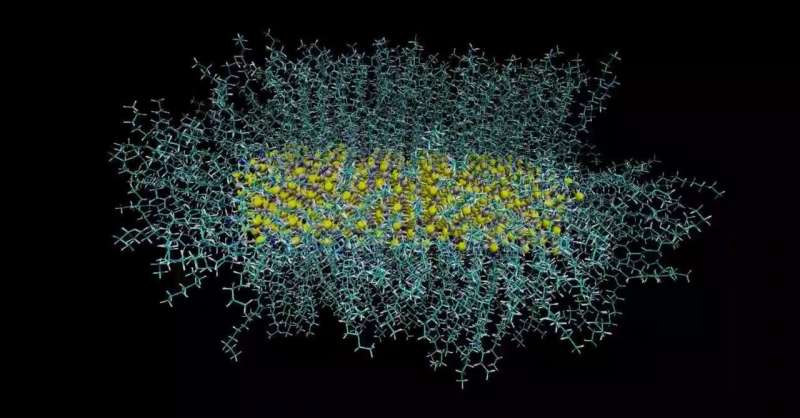Groundbreaking research at Curtin University has revealed how manipulating the shape of nanocrystals can significantly improve the performance of everyday technologies. From brighter TV screens to more efficient solar panels and advanced medical diagnostics, this groundbreaking discovery could revolutionize the future of various industries.

Unlocking the Power of Nanocrystal Shapes for Advanced Technologies
The study, led by Associate Professor Guohua Jia from Curtin’s School of Molecular and Life Sciences, investigated how the shape of zinc sulfide nanocrystals affects the way molecules, known as ligands, attach to their surface. The findings, published in the prestigious Journal of the American Chemical Society, reveal a pivotal breakthrough that could unlock new possibilities for developing smarter and more advanced devices.
The researchers discovered that flatter, more even particles called nanoplatelets allow more ligands to attach tightly, compared to other shapes like nanodots and nanorods. By adjusting the shape of these nanoparticles, the team was able to control how they interact with their surroundings, making them more efficient in various applications.
Revolutionizing Everyday Technologies with Nanocrystal Shapes
The potential impact of this discovery is far-reaching, as it could enhance the performance of devices known as optoelectronics, which either produce light or use light to perform their functions. Optoelectronics are vital in many modern technologies, including telecommunications, medical devices, and energy production.
One of the most significant applications of this discovery is in the realm of LED lights and screens. LEDs convert electricity into light and are used in a wide range of products, from light bulbs to TV screens. By controlling the shape of the nanocrystals, the researchers were able to improve the efficiency and brightness of these devices.
Another key application is in solar panels. The ability to manipulate the shape of nanocrystals could lead to more efficient solar cells that convert sunlight into electrical energy, powering devices in a more sustainable manner.
The discovery also holds promise for advancements in medical imaging. Devices that use photodetectors to sense light and convert it into electrical signals, such as cameras and sensors, could benefit from the improved performance enabled by the nanocrystal shape control.
Shaping the Future: The Implications of Nanocrystal Research
The implications of this groundbreaking research are far-reaching and have the potential to transform a wide range of industries. By unlocking the ability to control the shape of nanocrystals, the researchers have opened the door to a future where everyday technologies are more efficient, compact, and advanced.
The potential applications of this discovery extend beyond the examples mentioned, as the researchers believe the ability to manipulate the shape of nanocrystals could revolutionize the performance of laser diodes used in fiber-optic communication, where electrical signals are converted into light for data transmission.
As the world continues to seek more sustainable and efficient solutions, the research team’s findings could play a crucial role in driving technological advancements that positively impact our lives. From brighter screens to cleaner energy and improved medical diagnostics, the future of everyday technologies has never been more promising, all thanks to the groundbreaking work on nanocrystal shapes.
